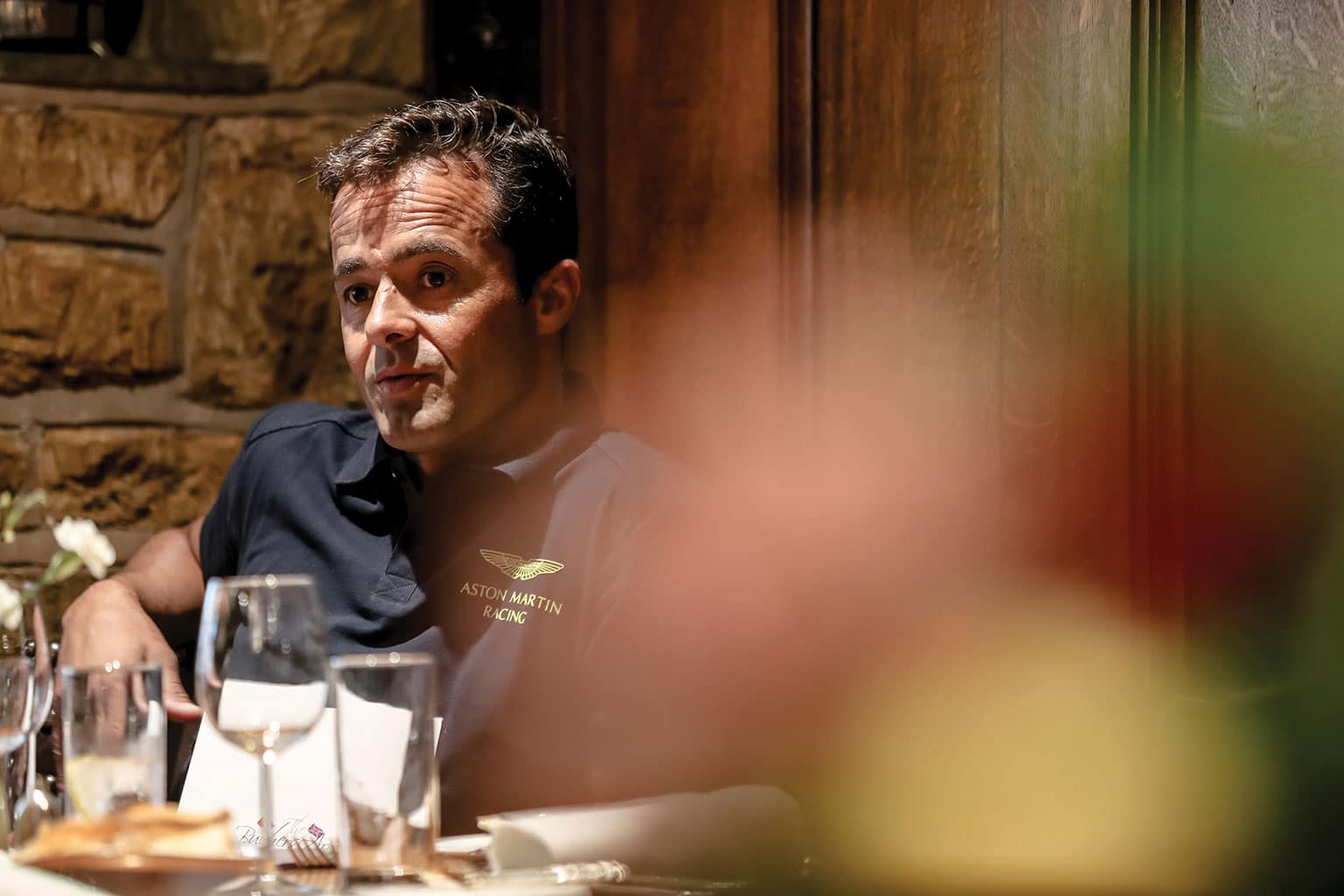Lunch with... Pedro Lamy
After the loss of Ratzenberger and Senna, the Portuguese star was lucky to escape his own terrifying F1 accident, and has since forged a successful career in sportscar racing
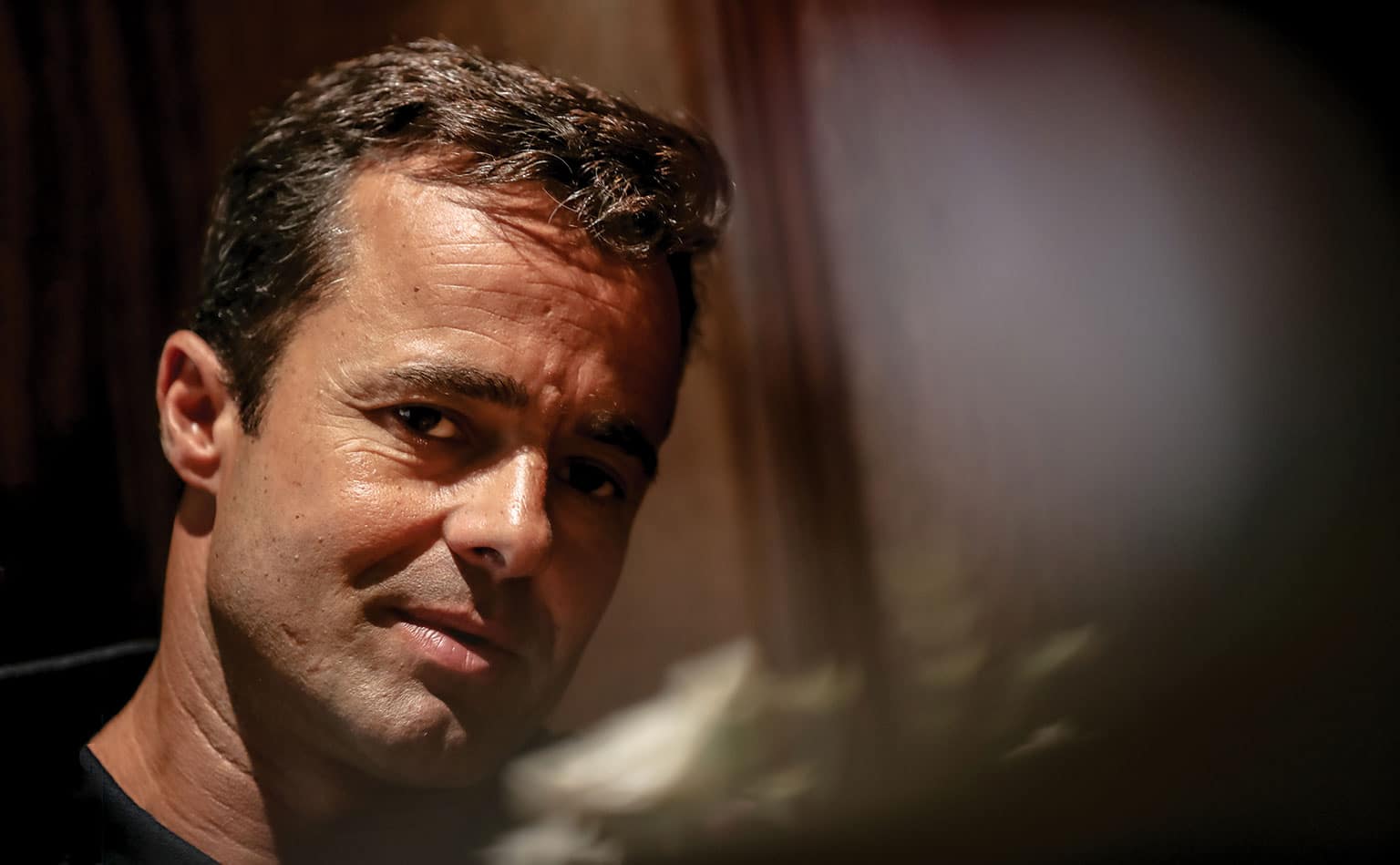
Lyndon McNeil
It is remarkable to think that the man who was dealt the last, heavy blow of that terrible and tragic month of May 1994 is still racing at the top level.
Indeed, it’s remarkable Pedro Lamy is even sitting here at all, so bad was his crash at Silverstone when testing FIA-mandated tweaks to his Lotus 107C.
“When you have a big shunt your memory goes from just before and after,” he says now.
Johnny Herbert, first on the scene, was adamant his talented young team-mate had perished. The view on the pitwall was the same. It took some time for Herbert to even find him, because the tub of the car with driver within had disappeared into the pedestrian tunnel after Abbey Corner. The rest of the Lotus’s parts had been strewn all over the asphalt and beyond.
It wasn’t even his first big hit of the month, having ploughed into the back of JJ Lehto’s stalled Benetton that fateful weekend at Imola following a signature fast start. A wheel shot hard and fast into the crowd, injuring a spectator, but mercifully Lamy and Lehto walked away. Roland Ratzenberger the day before and Ayrton Senna a few laps later weren’t quite so lucky.
A few weeks later, with Karl Wendlinger in a coma following his own death-defying escape at Monaco, Lamy’s career appeared all but over. Until then he had been a prodigious title-winning talent. Thankfully he would fulfil his potential and return to F1, and score a point, before racing for more manufacturers than most could name.

After a troubled F1 career, Pedro Lamy now races in the WEC with Aston Martin
Motorsport Images/Ebrey
We meet in his regular haunt, the pretty 14th century Butchers Arms of Priors Hardwick, in Warwickshire, for a chicken Caesar salad, followed by sea bass. He orders a sparkling water, because he has important business just a few days later up the twisty back roads to Silverstone and the World Endurance Championship’s 6 Hours with Aston Martin.
Not only is this his local, and has been since early 1990s F3 driver and compatriot Diego Castro Santos introduced him to it almost 30 years ago, but the owner is too. “He is from my region in Portugal, something like 50kms away,” Lamy says with a still-disbelieving smile.
Lamy grew up just north of Lisbon, not into money, but with a connection to motor sport via his father. “My dad did some rallying when he was younger. He started in an NSU, and later drove Toyotas but he stopped for a long time when I was born. It was only regional and national rallying because he paid for it all from his own pocket. He was fast, though.”Lamy Jr would soon be trying his own hand at racing, albeit on two wheels, and the family became acutely aware of the perils of his chosen hobby.
“I was living in a small village, racing around it on a bicycle and then got a small motorbike. I had been moving up the categories, junior, mini-moto and then onto the next level of jumps. We didn’t plan to go karting, but I had stopped competing on bikes for a year because my mechanic had a big accident. He was paralysed – it was a big shunt. My family decided then that I should stop racing motocross.”
So they decided to double the wheel count. “Racing bikes was really stressful and made me nervous; I was just a kid. But karting I enjoyed, it was powerful for my age and felt really cool. I led my first race until I had a puncture, but I didn’t win the championship in my early years. I was winning races but not all of them, so I only became champion in ’88 – I’d started in ’85. The only title I won was in the main category, and then I went to Formula Ford.
“I didn’t have a manager or anything; my father supported me and I had a few sponsors. My father was selling cars, he still is, so he knew a lot of people and he made me go out and find the money to race. I was really shy, but I knew I wanted to race. I went out to speak to them all – maybe my father was talking to them behind the scenes – to ask for money to race and I managed to get some for karting. Without that I wouldn’t have been able to carry on; my father didn’t have the money to.”

Lamy announces himself to the world with victory in the 1992 Masters of F3 race and German F3 championships
Motorsport Images
Life became easier when he continued to claim strong results, and he won the Formula Ford title at the first attempt. It was soon time to leave Portugal for the UK, and to move into the same circles as former F1 stars.
“After I won Formula Ford in 1989 I started in Formula Opel Lotus with Derek Bell Racing – I was living in Bognor Regis at the time, next door to John Watson!
“It was a tough time, my first time away from home and my English was basically zero. It was terrible. I was living with a Swiss and Swedish driver, Cedric Reynard and Peter Åslund, and I looked at them like ‘God, these are the best drivers in the world.’
“We didn’t have a very good car that year, and I knew I had one shot so after a few races I moved to David Sears and did the deal myself. Normally you pay up front, so I had to split the money somehow. I went to the owner of Derek Bell Racing, not Derek, and he wanted to kill me, but I had everything packed up in my car and just drove to Snetterton to go live in Attleborough.
“I started to enjoy it a bit more because David Sears organised a house next door to some Brazilian guys. I had good results and learned a lot from my team-mate [Vincenzo] Sospiri. [Rubens] Barrichello won that year, but I was getting closer and actually won two races in the national championship and a podium in Europe. It was good fun.”

Part of a tight F3000 battle, Lamy finished second in the points before joining the Lotus F1 team for the final four GPs of the year
Motorsport Images
The break-out season was 1991, following another switch of teams. The shoes to fill at leading squad Draco Racing were big – they previously belonged to Rubens Barrichello, and things started well. He ended the season as champion.
“When I had my first test with Draco I was quicker than Rubens. Adriano Morini, the owner, was a really good teacher and had a different mentality to what I was used to. I fitted in really well with the family, him and his wife Nadia.”
While his friends and rivals stepped up to Formula 3 in the UK, Lamy was advised by his high-profile manager, Domingos Piedade, to move to Germany. But not before a prize test in a DTM car, where he met another British former F1 driver.
“I tested with James Hunt,” he says, as though he has only just remembered. “Maybe he was doing it to come back, maybe for TV; I don’t know. He was cool, but complaining about the Germans – ‘The bloody Germans, always the same sh**. The steering is too heavy, it’s always the same!’
“If you look back at that German F3 year it was a good grid – Michael Krumm, Marco Werner, people like that. Marco was more competitive than Krumm, but we also had Diogo Castro Santos, Jörg Müller, Sascha Maassen.”
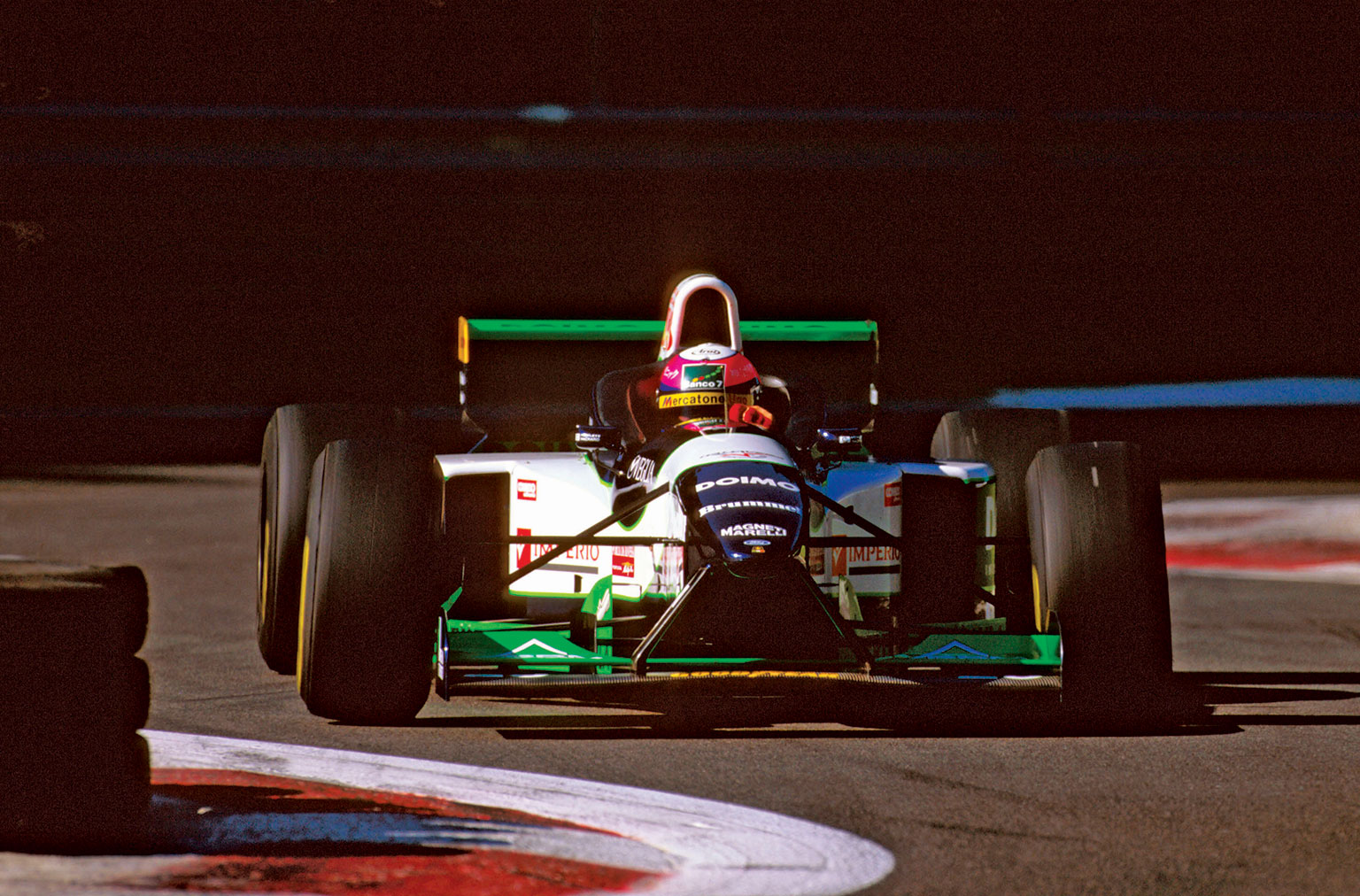
Lamy returns to F1 with Minardi following a Silverstone crash the previous Summer, turning down a lucrative Mercedes DTM drive
Motorsport Images
Lamy won almost half the races that year, and his stock continued to rise. But it was on the streets he really shone, particularly at Macau.
“I didn’t realise I had this image as a rising star, but I was winning. I had won the Marlboro Masters, beating people like Gil de Ferran, and at Macau I should have won. I was leading the first race by something like five seconds, with Rickard Rydell second. There was a slow car and yellow flags, I slowed down but Rickard overtook us both. We protested it but nothing happened.
“I had used new tyres for the first race and only had old ones left, so Rickard pulled away. I was catching but finished second. I was fast enough to win the race, but it wasn’t to be.”
While only Rydell was ahead, Jacques Villeneuve, Tom Kristensen, Gil de Ferran, Barrichello and many more famous names were in his wake. Unsurprisingly, the former Portuguese colony remains a special place for Lamy.
“Maybe it’s more special to me because I only drove there once, but to drive on the limit, with the car on the limit through the fast corners, jumping through the barriers is really cool. It just gives you the most adrenalin. It would be nice to do the GT race now in an Aston Martin, but it wouldn’t be the same as in an F3 car. Actually, my memories of Macau are so good that I wouldn’t want to burn that!
“It’s much better than Pau, because of the blind corners and long straights. Compared to Monaco even, Macau is the best.”

A dream turns nightmare, as the Mercedes CLR is withdrawn from Le Mans in 1999 after three terrifying flips
Motorsport Images
Nobody bettered Lamy on the French streets of Pau the following year, in F3000 in 1993, few even saw him – he beat David Coulthard by more than half a minute.
“That was the biggest moment for me in F3000. The team, Crypton Engineering, was good, the engineers were good, but the owner was a bit dodgy…”
But that would be Lamy’s only win that year. Mishaps at Enna, a spin at Spa and a non-finish in the finale meant he could manage only second in the International F3000 standings – one point behind Olivier Panis.
“I should have won the championship,” he says, but not ruefully. “I started the season with an old car and raced almost all year with it. I didn’t know how it was going to go but we arrived at Donington for the first round and I was second.
“Enna that season was really amazing. I was leading the race by a few seconds and one of the backmarkers went straight over the chicane and made the track really dirty. I was the first one arriving and there were no flags, so I spun. When I came back on I was behind Coulthard, so I was pushing hard to catch him, but I wasn’t counting the laps very well and I thought it was the last lap…
“I caught him, and I’m not proud of it, I thought ‘either I win, or nobody wins.’ I pushed him under braking and he went straight on, and I thought I had won. I was celebrating. When I realised, I had a damaged front wing and spun on the last lap out of the lead.
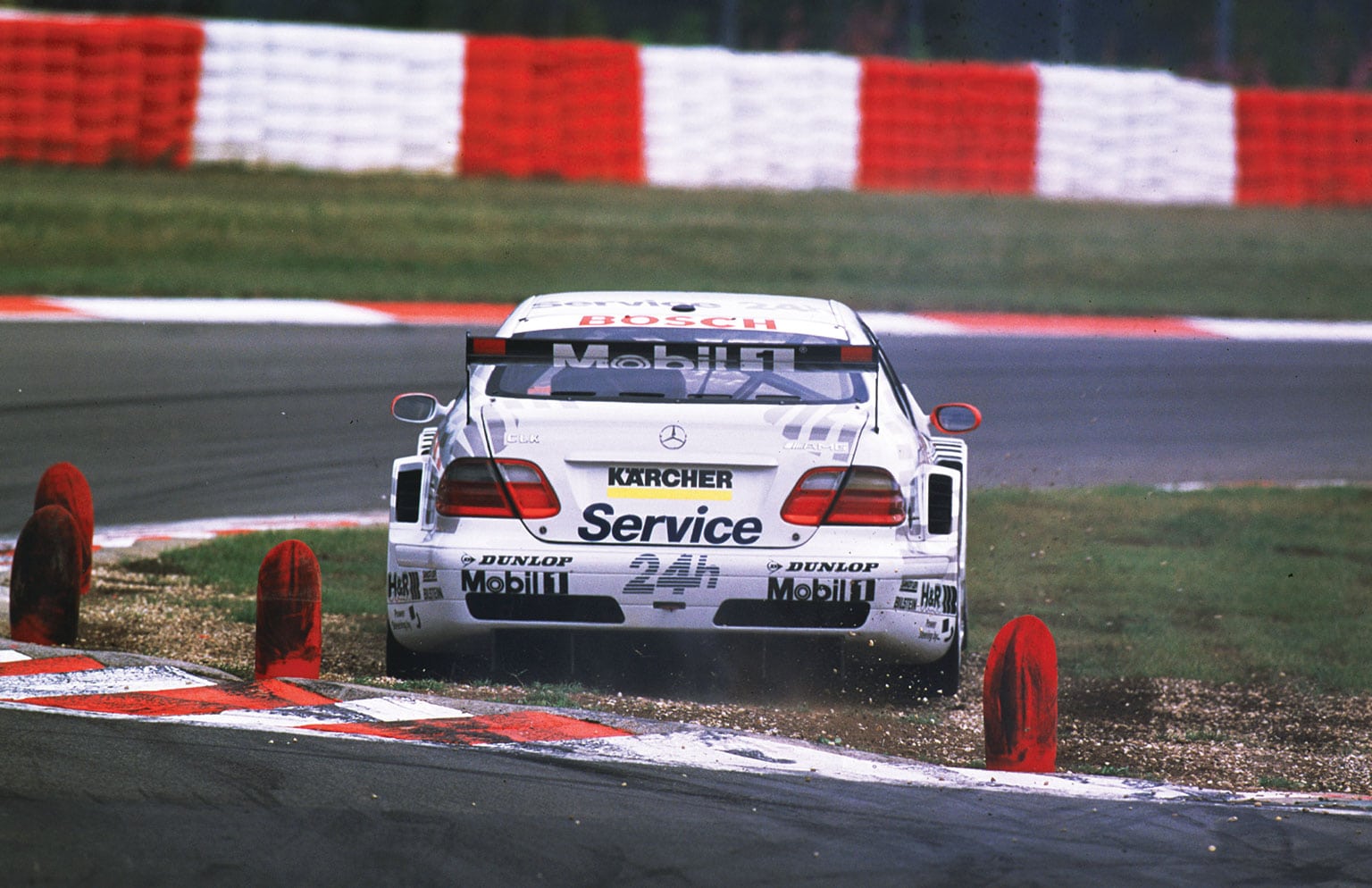
Lamy eventually appears in DTM with Mercedes after the Le Mans withdrawal, only to ‘fire himself’ from the team
Motorsport Images
“At Spa I had spun at Bus Stop, and almost collided when I came back on. But that was the weekend I started talking about Formula 1, and Alex Zanardi had a big accident that same weekend.”
Concussion ruled Lotus’s Zanardi out for the remainder of the 1993 Formula 1 season, and it would be Lamy who replaced him for the final four races – starting at Monza.
“When you get the opportunity you have to go for it. I could have maybe had another year in F3000, but it’s a big risk. If you don’t have a good second year, the opportunity may have gone.”
And even at just 21 years old, Lamy was fully aware of the historical significance of a Portuguese arriving in F1.
“Nicha Cabral was the first, then Pedro Chaves, but he never qualified, and then it was me. I was doing commercials and things back home.
“All I had before Monza was driving the car at Silverstone, not even on the full track. I had to learn everything – not like the young guys now. It had only been eight years since the first time I had been in a car. Now, 10 years feels like yesterday but at the time, and when you’re young, one year feels a long time.”
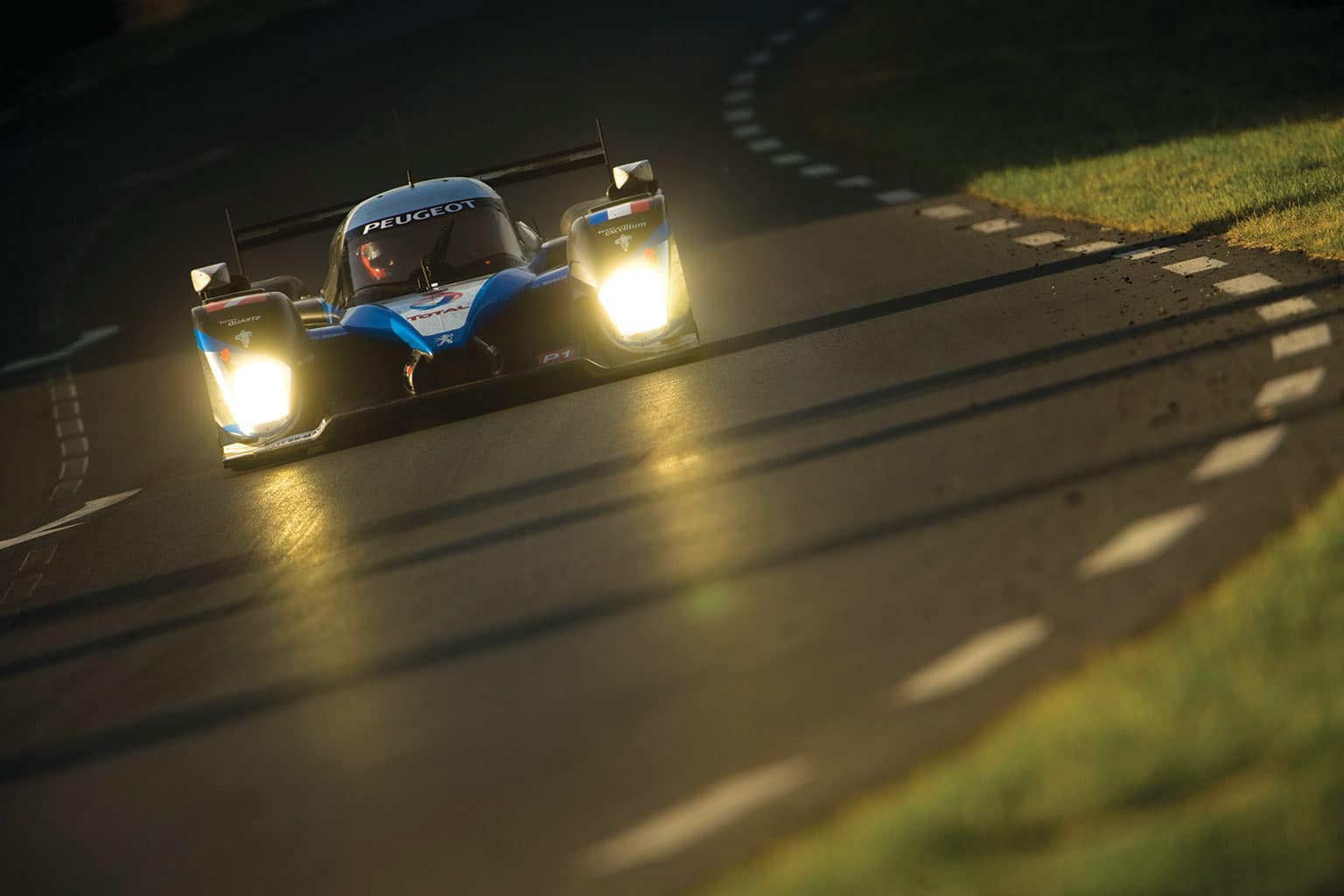
Strong showings alongside Stephane Sarrazin results in a factory Peugeot LMP1 drive, winning the title in his debut year
Motorsport Images
Still, he dragged the car to 11th, before retiring from his home Grand Prix a fortnight later. But ask Lamy of his memories, or highlights, and there are none.
“The target was to get close to Herbert and learn as much as possible. I knew anything could happen, so why not just go for it? Johnny was fast, the car was really tough to drive. But I never really look back – if I don’t have a very good result or it’s not good enough, I forget about it. I don’t know why.
“In Formula 1, I enjoyed testing the most. That’s not normal. Adelaide, when I got a point with Minardi, was good, and if I look back at F1 as an experience it was great. But good moments? I didn’t have them. I was used to winning and fighting for races. In F1, my memory just deletes it. OK, I was in F1, but I wasn’t happy.”
If his mind has scrubbed much of his time in F1, it had no choice but to forget what happened that day at Silverstone in May 1994.
“I just remember, or I know now, that we were testing and I suddenly lost the car. The rear wing broke at Abbey corner, the car spun and I just flew. The car was completely destroyed, Johnny [Herbert] was the first car that arrived, and I remember having some crazy conversations with him because of the morphine, but not much of the recovery.”
His legs were shattered, kneecaps and thighs broken.
“I was living in Norwich at the time, renting an apartment. After the accident I never went back. You know, you have everything set up how you like it then you have an accident and my family just went and cleared it all out.”
The big question following that was whether Lamy had lost any of his speed, his edge and what could have been a glittering future? “I don’t think so, but it’s possible. In fast corners I always kept going – if one person was flat through a corner it was always me. Slow corners are when you make the time, anyway. But, I can always say that because of my accident I always have half a second in my pocket!
“I was really pushing hard to come back after the accident. You either quit or get back. I had good options, especially in DTM. Maybe today I would have risked it and moved across because I was already in F1. There were two spots at Mercedes, one went to Dario Franchitti and one went to Jan Magnussen. Look what happened to them. Maybe I would have had good DTM results and could have gone back to F1 or on to IndyCar.
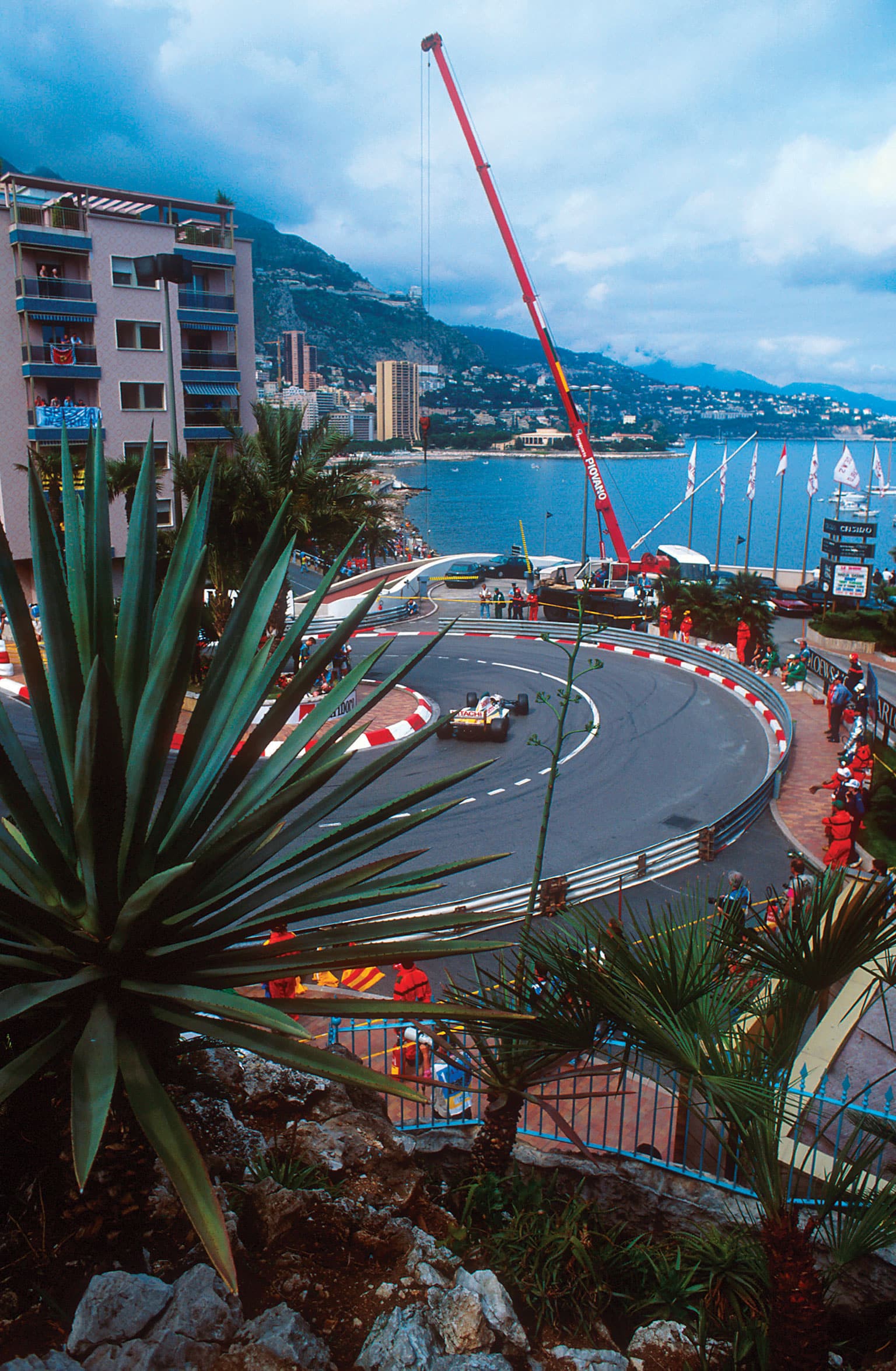
Lamy’s F1 break came with Lotus, but he doesn’t hold fond memories of his F1 career
Motorsport Images
“It’s difficult to say what might have happened for me without the accident. Maybe I wouldn’t have had any chances at all, because the team went bankrupt at the end of the year. Maybe I would have had the chance to go to Ligier like Herbert did. Or, if I was smart enough and understood the game enough I would have tried to talk to Flavio Briatore [at Benetton].”
Many would have simply not worked to come back to F1 at all; the sacrifices were just too stark. His crash was the culmination of one of the sport’s darkest months – Imola, followed by Monaco, then Lamy at Silverstone.
“I felt the loss we had far more than the pain in my knees. Ayrton had died, y’know? I had become close to Senna through Domingos, my manager, and I remember trying not to disturb him much. But he helped me where he could. We would go to dinner; we only raced together for eight races but Ayrton was special. He was really calm, he always knew exactly what he was doing. I wish I could have spent more time with him. I was really young, he was my idol, but I didn’t want to disrupt him. Then, after a few months, I’d lost him, so…
“But I wanted to come back. I had the DTM opportunity, but I didn’t want it. I wanted to get my dream back. It was difficult when I was in hospital. Being Latin and more passionate, I felt I didn’t have the support I expected from Lotus. With so much morphine and so much sleeping, many people came to see me, and I don’t even remember.”
The comeback trail began with a test in a Sauber.
“I was so worried about my leg and my knees that I didn’t do enough exercise on my neck. The test was OK, but I wasn’t physically prepared. It was too early, really. And it was a shame I couldn’t use new tyres…”
Instead, a deal was struck with Minardi for the 1995 season, where he would stay for two seasons. “It was a nice car, easy to drive. The Lotus was competitive when it worked – we had active suspension – but it was a bit of a nightmare in comparison. The Minardi’s engine wasn’t as strong but the chassis was good. It wasn’t a competitive car, so I decided it was better to quit than spend all my efforts in F1 and losing a life. It wasn’t easy to change.
“I considered IndyCar at one stage. I went to America but never had the opportunity to take it further. But I didn’t push it much, and I didn’t want to go to a small team just to keep my career going. I met with Greg Moore around the time he died [in a CART accident in 1999] – I didn’t feel it would be safe on the ovals.
“In 1997 I went with a German team into GT1 and that went bankrupt, which wasn’t a nice experience. I was driving with Bob Wollek, who was tough and a lot older than me. When you’re in Formula 1 and only that, you don’t know who Bob Wollek is. I was thinking ‘who is this old man here? How can they let him drive?!’ But he was quick, I arrived there as a young guy and was faster. He was complaining and grumpy, saying ‘ah, these guys arrive from Formula 1 and don’t know about anything.’ Maybe he was right. He didn’t like to be with me I don’t think.”
The jump to sports cars prompted two decades around the top level, and a career spanning most of the major manufacturers. His appearances in a Porsche 911 GT1 helped him claim third in class at Le Mans with Schübel Engineering in 1997. A year later he teamed up with former single-seater rival Olivier Beretta to score second with Team Oreca’s GT2 Chrysler Viper. And then came a big break: Mercedes.
“When I first arrived at Le Mans, I remember just thinking ‘wow, there are big races outside of F1?’ I was impressed by everything. The pleasure of driving Le Mans is great, but it doesn’t compensate for the pressure. The best feeling for Le Mans is getting back to the airport.
It’s a difficult week.”
That proved most true in 1999, when Mercedes was forced to withdraw its CLR cars after three infamous airborne flips.
“It was a second life with Mercedes, because I had said no to them once for DTM after my accident. But I had won the world championship with Chrysler and Mercedes had a lot of slots free. I had been happy at Chrysler, we were winning races, so I was coming home happy. I then did OK in a test with Mercedes, which helped.”
Come Le Mans, Mark Webber’s car twice took off before the race, before Peter Dumbreck suffered the same fate on Saturday evening. Lamy is in no doubt that it should never have got to that point.
“Mark was really shocked; he was just saying ‘this is crazy.’ I was just changing to get ready when Dumbreck flipped – they should have pulled the car out of the race. We all thought so, except Bernd Schneider – he was ready to go, ready to go to die. We were scared, all of us.
“The car’s power steering was really light anyway, and when it got lighter it was just: ‘oh my God’ and you’d brake. It wasn’t like you could break the car, really; it wasn’t possible to miss a gear or anything like that. You’re also not sure whether they are right or not; imagine if you kept going and could win the race? You have a job to do. You can’t say you won’t drive that car.”
Withdraw or not, it wasn’t the drivers’ decision to make. And Lamy was again aware of the context surrounding a Mercedes Le Mans disaster playing on management’s mind. “Norbert Haug [Mercedes’ motor sport boss] had a difficult choice. Stopping would be difficult, but so was sending the cars out with Mercedes’ history at Le Mans. Norbert and [designer] Gerhard Unger wanted to save their face – they gave us a bit more wing at the front, but we knew the problem was still there. Unger was saying ‘it’s all under control and just give it more downforce. Be careful with the kerbs,’ this and that. But it was at high speed when the car would fly; that’s where we needed to be careful and not be in the tow. But you need to be in the tow at Le Mans.
“I can’t complain about Haug, he was alright with the drivers. He was screwing you, but smiling when he did it. It’s better than him not talking to you and not giving a sh**; a lot of the others just cared about the money.”
Yet Lamy took on Haug soon after, when Mercedes cancelled the programme and transferred its drivers into DTM. Lamy was unhappy, and his Latin instincts took over. “They didn’t give me the factory cars. I was with Darren Turner, and we were fast in practice – a lot of the time first or second – but in races we were at the back. I realised things weren’t fair there, and after four races I tried to get into the factory team [HWA].
“Mercedes didn’t give me the place, but they told me things would change – different engineers, this and that. But I had had enough, so I quit and basically fired myself. I had suffered enough in my life, so I just went home. I had a meeting with Haug and team manager Hans-Jürgen Mattheis and I said ‘This is my last race. We need to talk. I don’t know what I’m going to do but I’m not racing for you.’ He was quite cool, because he didn’t want me to say bad things about the team. I didn’t; the reality was that I just wasn’t happy. I would prefer to race something else. I didn’t want to just be part of the grid, part of their picture so they could say they had this F1 driver.”
He had nothing lined up, no options. The solution was variety, and in no small part the Nürburgring 24 Hours. He joined Zakspeed in 2001, winning on his debut with Michael Bartels and Peter Zakowski. “That was a great feeling, it was the first time I had driven there but I got fastest lap. Bartels couldn’t drive the whole race because his friend died in an Alfa-Romeo that year in an accident, so the rest of it was Peter and me all the way through.
“The year after we raced in the V8Star Series. I was having fun, I was getting a bit of money, we were winning and I really enjoyed it. We won again at the Nürburgring in the Viper, too.”
A third win at the ’Ring followed with BMW, sharing with Dirk and Jörg Müller, and Hans-Joachim Stuck in 2005, before returning a year later to collect a fourth win – this time with Boris Said, Patrick Huisman and Andy Priaulx. But he was spending more time in Larbre Competition’s Ferrari in the Le Mans Endurance Series.
“That’s how I got to race for Aston Martin. We won the LMES in 2004 and George [Howard-Chappell, then AMR boss] came and asked me to race for Aston Martin in ’05 and ’06, but at the same time I was still racing the Ferrari. I wasn’t the champion because I missed a race to drive for Aston Martin in America.
“Most of the time at Aston Martin I was racing with Stéphane Sarrazin. We won a lot of races in America. We had a really great time.”
That partnership opened the door to yet another factory seat, this time at Peugeot. The timing was perfect as he headed towards the latter stages of his career.
“They looked at Stéphane’s times and saw I was right with him, so they signed me too. I was at the limit of getting into a very good car at the time because I was 35. I had five years there, with many very good drivers that came and left. It was great for my career, really.
“Second at Le Mans in 2007 was a really good result – we didn’t expect it. We won the championship that year. It was close at Le Mans again in 2010, but I didn’t really believe we were going to win.”
He did score victory in the 24 Hours of the Nürburgring that year, with BMW, tying him with Marcel Tiemann on five career N24 wins. Nobody has more.
When Peugeot pulled the doors down on its prototype project he returned to Aston Martin – but not before finally claiming a GTE Am class win at Le Mans with Larbre. In his six seasons since he’s come agonisingly close to winning with amateur driver Paul Dalla Lana – never more so than in 2015, when Dalla Lana crashed out from the lead in the final hour.
“We were leading by almost a lap. It’s always difficult when you have something in your hands and you lose it – it hurts, but that’s life. The weekends with Paul are good; it’s different now – it’s more relaxed but we still have to do the job.”
Now 46 years old, he admits this will likely be his last contract in professional motor racing.
“I’m not in a position like Fernando Alonso and can just quit like that – I don’t think he’ll be racing in 10 years, when he’s the same age as me. When I stop I’ll just enjoy my life. If my body is OK I’ll surf every day. It doesn’t matter where, I just like to surf.
“It’s easy to look back and think ‘Maybe if I had gone here or to that team it would have been different’. But with the information I had at the time I don’t think I decided wrong. I’ve had a very lucky career, I’m still racing, and many who weren’t successful in F1 didn’t. I managed to stop F1 and keep going and form a career.”
Career in brief
Born: March 20, 1972
1991 Formula Lotus Euroseries champion, F3 Masters winner & Macau runner-up
1993 FIA F3000 runner-up, Pau GP winner
1993-96 F1 with Team Lotus and Minardi (32 starts, one point)
1998 GT2 champion, Dodge Viper
1999 Mercedes GT1 programme
2000 DTM with Team Rosberg
2001 First Nürburgring victory
2003 V8Stars champion
2004 Le Mans Series GT1 champion
2004 Le Mans Series GT1 champion
2007 Le Mans Endurance Series LMP1 champion, Le Mans runner-up Peugeot
2010 Fifth Nürburgring 24 Hours victory
2012 GTE-Am win at Le Mans with Larbre Competition
2013-date Aston Martin works driver
